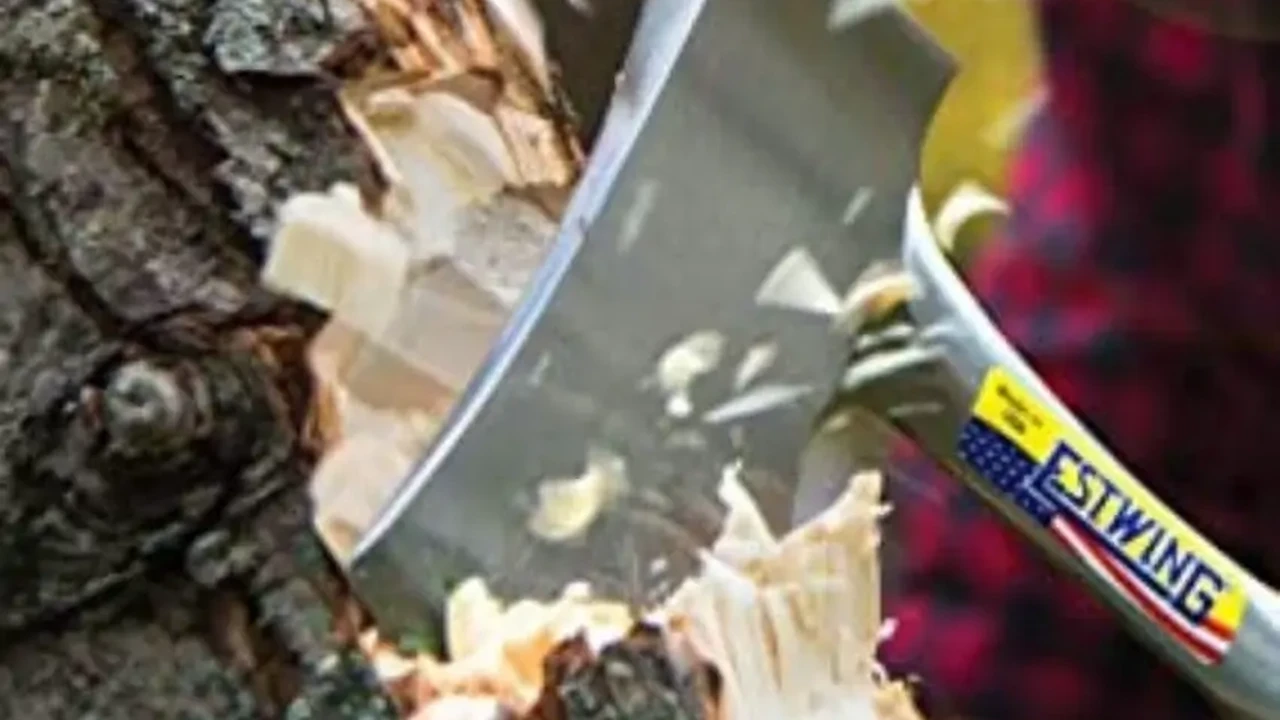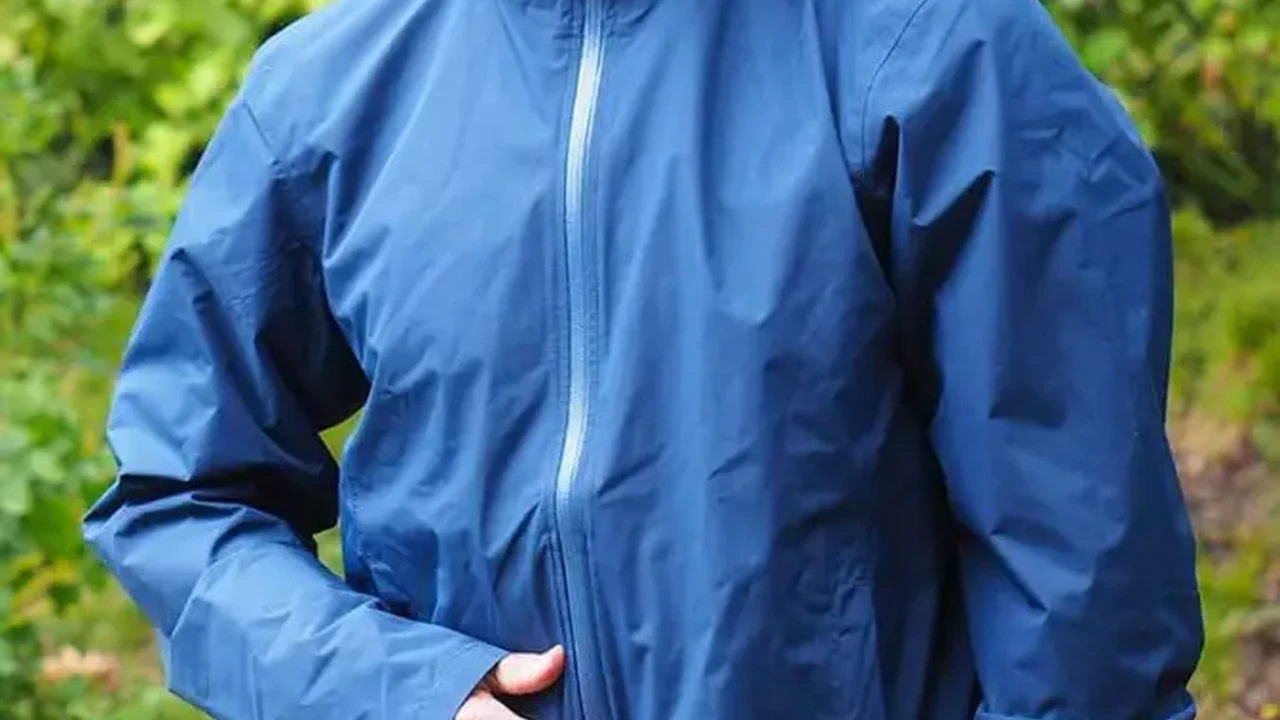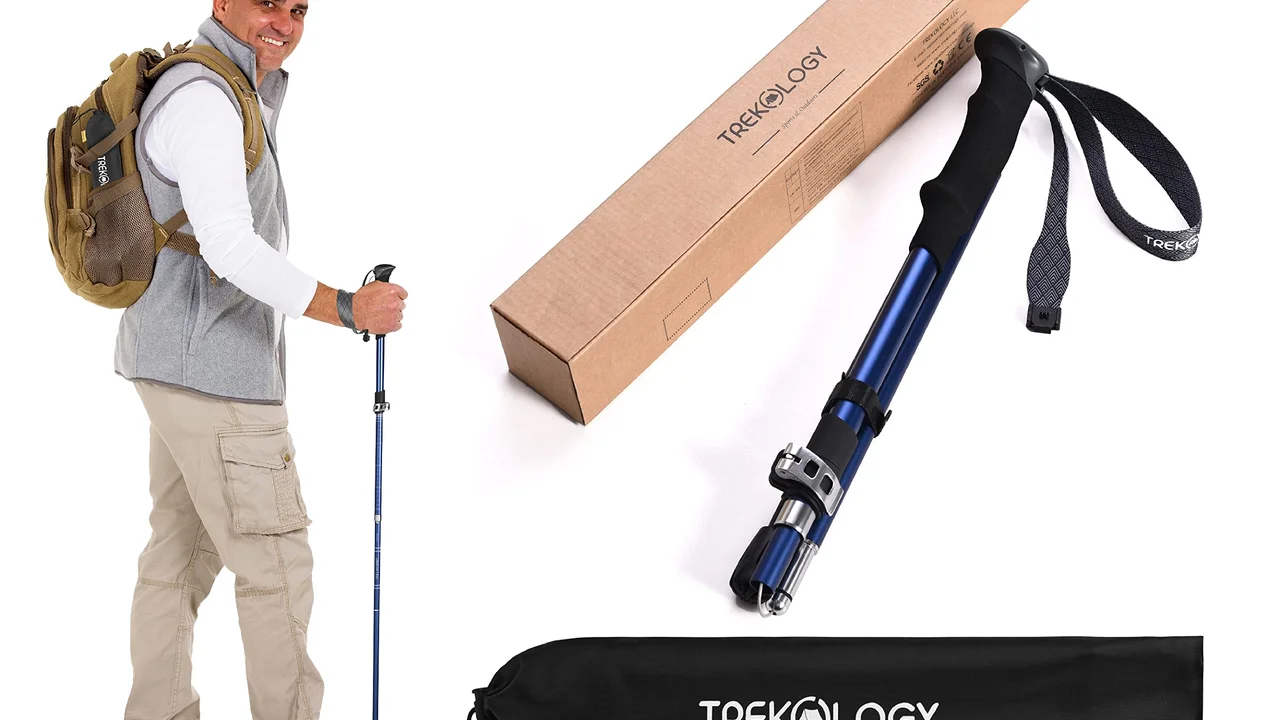Best Camping Axes and Saws for Firewood Preparation
Prepare firewood efficiently with the best camping axes and saws. Compare blade types, handle designs, and safety features for outdoor tasks.

Prepare firewood efficiently with the best camping axes and saws. Compare blade types, handle designs, and safety features for outdoor tasks.
Best Camping Axes and Saws for Firewood Preparation
When you're out in the wilderness, a roaring campfire isn't just for ambiance; it's often essential for warmth, cooking, and even morale. But getting that fire going requires a good supply of firewood, and that's where camping axes and saws come into play. Choosing the right tool can make all the difference between a frustrating struggle and an efficient, safe firewood gathering experience. Let's dive deep into the world of camping axes and saws, exploring their types, features, and recommending some top-notch products.
Understanding Camping Axes: Types and Features for Efficient Wood Splitting
Camping axes, often referred to as hatchets or felling axes, are designed for chopping and splitting wood. They come in various sizes and designs, each suited for different tasks. The key is to match the axe to your specific needs and the type of wood you'll be processing.
Hatchets: Compact Power for Smaller Tasks
Hatchets are smaller, one-handed axes, typically with a head weighing between 1 to 2 pounds and a handle length of 10 to 16 inches. They're excellent for limbing small branches, splitting kindling, and light chopping. Their compact size makes them easy to pack and carry, ideal for backpackers or those with limited space.
Recommended Hatchets:
- Gransfors Bruk Wildlife Hatchet: This Swedish-made hatchet is a classic for a reason. It features a hand-forged head, a comfortable hickory handle, and an incredibly sharp edge. It's perfect for detailed work, limbing, and splitting small logs. Its price point is around $180-$200 USD, reflecting its superior craftsmanship and durability. Ideal for bushcraft enthusiasts and those who appreciate traditional tools.
- Fiskars X7 Hatchet: A more modern and budget-friendly option, the Fiskars X7 boasts a durable, lightweight FiberComp handle and a sharp, low-friction blade coating. It's excellent for general camping tasks, splitting kindling, and light chopping. Expect to pay around $30-$40 USD. Great for casual campers and beginners due to its ease of use and robust design.
Camping Axes: Versatility for Medium-Duty Work
Larger than hatchets but smaller than full-sized felling axes, camping axes typically have a head weighing 2 to 3 pounds and a handle length of 18 to 28 inches. They offer more power for splitting larger logs and felling small trees, while still being relatively portable.
Recommended Camping Axes:
- Husqvarna Wooden Handle Hatchet (20-inch): Don't let the 'hatchet' in the name fool you; this is a robust camping axe. It features a Swedish steel head and a hickory handle, offering a great balance of quality and affordability. It's excellent for splitting medium-sized logs and general campsite work. Priced around $60-$80 USD. A solid choice for car campers and those needing a bit more power than a hatchet.
- Estwing Sportsman's Axe: Known for its solid steel construction, the Estwing Sportsman's Axe is incredibly durable and virtually indestructible. It has a leather grip and a well-balanced design, making it a reliable choice for various chopping and splitting tasks. Expect to pay around $50-$70 USD. Perfect for those who prioritize durability and a tool that can withstand heavy use.
Key Axe Features to Consider:
- Blade Material and Sharpness: High-carbon steel is preferred for its edge retention and durability. A sharp blade is crucial for efficient and safe cutting.
- Handle Material and Ergonomics: Hickory and ash are traditional choices for their shock absorption and strength. Composite handles (like Fiskars' FiberComp) offer durability and weather resistance. The handle should feel comfortable and provide a secure grip.
- Head Weight and Balance: A heavier head provides more splitting power, but a well-balanced axe is easier to swing and control.
- Sheath: A good quality sheath protects the blade and ensures safe transport.
Exploring Camping Saws: Precision and Portability for Wood Processing
While axes are great for splitting, saws excel at cutting through wood with precision and less effort, especially for cross-cutting logs. They are often safer for beginners and can be more efficient for certain tasks.
Folding Saws: Compact and Convenient for Trail Use
Folding saws are incredibly popular among campers and backpackers due to their compact size and safety. The blade folds into the handle, protecting the teeth and making them easy to carry in a pack.
Recommended Folding Saws:
- Bahco Laplander Folding Saw: This is a highly regarded folding saw known for its aggressive tooth pattern, which makes quick work of both green and dry wood. It's lightweight, durable, and features a comfortable grip. Priced around $25-$35 USD. An absolute must-have for backpackers and day hikers needing to process small to medium-sized branches.
- Silky Gomboy Folding Saw: Silky saws are renowned for their exceptional Japanese steel blades and precise cutting ability. The Gomboy is a versatile folding saw that cuts on the pull stroke, making it very efficient. It comes in various blade lengths. Expect to pay around $45-$60 USD. Ideal for those who prioritize cutting speed and precision, even for slightly larger diameter wood.
Bow Saws: Power and Efficiency for Larger Logs
Bow saws are larger, two-handed saws with a thin, tensioned blade held within a bow-shaped frame. They are excellent for cutting larger logs and are very efficient for cross-cutting. While less portable than folding saws, they offer significant cutting power.
Recommended Bow Saws:
- Sven-Saw (21-inch): The Sven-Saw is a unique and highly effective folding bow saw. It folds down compactly for transport but deploys into a sturdy bow saw capable of cutting through substantial logs. It's a favorite among canoe campers and those who need serious cutting power without a full-sized saw. Priced around $40-$50 USD. Perfect for car camping or situations where you need to process larger amounts of firewood.
- Fiskars Bow Saw (21-inch or 24-inch): Fiskars offers reliable and affordable bow saws with sharp blades and comfortable handles. They are straightforward, effective tools for cutting larger diameter wood. Expect to pay around $20-$30 USD. A great budget-friendly option for general campsite firewood processing.
Chain Saws (Manual/Pocket): Emergency and Lightweight Options
Manual chain saws, often called pocket chainsaws, are essentially a chain with teeth that you wrap around a log and pull back and forth using handles. They are incredibly compact and lightweight, making them ideal for emergency situations or for cutting small to medium-sized logs where a traditional saw or axe might be too cumbersome.
Recommended Manual Chain Saws:
- Nordic Pocket Saw: This Swedish-designed pocket saw is known for its durable chain and comfortable handles. It's surprisingly effective for its size and can cut through logs up to 4-5 inches in diameter with relative ease. Priced around $40-$50 USD. An excellent emergency tool or for ultralight backpacking where every ounce counts.
- Survival Industries Pocket Chainsaw: A more budget-friendly option, this pocket chainsaw offers similar functionality. While perhaps not as refined as the Nordic, it gets the job done for occasional use. Expect to pay around $15-$25 USD. Good for a backup tool or for those on a tighter budget.
Key Saw Features to Consider:
- Blade Length and Tooth Pattern: Longer blades cut faster but are less maneuverable. Different tooth patterns are optimized for green wood, dry wood, or general purpose.
- Handle Ergonomics: A comfortable, non-slip grip is essential for safe and efficient sawing.
- Portability and Safety: For folding saws, ensure the locking mechanism is secure. For all saws, a protective sheath or folding design is crucial for transport.
Axe vs. Saw: Choosing the Right Tool for Your Firewood Needs
The choice between an axe and a saw, or often a combination of both, depends on several factors:
Type of Wood and Task:
- Splitting Logs: An axe (or hatchet) is generally superior for splitting logs along the grain. Its wedge-shaped head is designed to force the wood apart.
- Cross-Cutting Logs: Saws are much more efficient and safer for cutting logs across the grain. They remove material, rather than forcing it apart, requiring less effort and reducing the risk of glancing blows.
- Limbing and Clearing Brush: Hatchets and smaller axes are good for limbing, while a folding saw can also be very effective for this.
- Processing Kindling: A hatchet is excellent for making small pieces of kindling from larger chunks.
Portability and Weight:
- Backpacking: A lightweight folding saw (like the Bahco Laplander) is often preferred due to its minimal weight and compact size. A small hatchet might also be considered for specific bushcraft tasks.
- Car Camping: You have more flexibility here. A larger camping axe for splitting and a bow saw for cross-cutting would be an ideal combination.
Safety Considerations:
- Axes: Require more skill and attention to safety. The risk of injury from a glancing blow or improper swing is higher. Always wear appropriate safety gear (gloves, eye protection, sturdy footwear).
- Saws: Generally considered safer for beginners as they involve a more controlled, back-and-forth motion. However, sharp blades still demand respect and careful handling.
Essential Safety Tips for Using Axes and Saws in the Outdoors
Safety should always be your top priority when handling sharp tools in the wilderness. A moment of carelessness can lead to serious injury.
Axe Safety:
- Clear Your Work Area: Ensure there are no obstacles, people, or pets within your swing radius.
- Proper Stance: Stand with your feet shoulder-width apart, slightly staggered, for balance.
- Secure Your Wood: Never hold the wood with your hand while chopping. Use a chopping block or brace the wood securely.
- Sharp Blade: A sharp axe is safer than a dull one. A dull blade is more likely to glance off the wood, increasing the risk of injury.
- Wear Protective Gear: Always wear sturdy gloves, eye protection, and closed-toe shoes (preferably boots).
- Never Chop Towards Your Body: Always chop away from your feet and legs.
- Store Safely: Always use a sheath when transporting or storing your axe.
Saw Safety:
- Stable Workpiece: Ensure the log or branch you are cutting is stable and won't shift unexpectedly.
- Proper Grip: Maintain a firm, two-handed grip on the saw (for bow saws and manual chainsaws).
- Controlled Strokes: Use smooth, controlled strokes. Don't force the saw.
- Watch for Pinch Points: Be aware of the wood pinching the blade as you cut, especially with larger logs.
- Keep Fingers Clear: Always keep your non-cutting hand well away from the blade.
- Store Safely: Fold the blade or use a sheath when the saw is not in use.
Maintenance and Care for Longevity of Your Tools
Proper maintenance ensures your axes and saws remain sharp, safe, and last for many years of outdoor adventures.
Axe Maintenance:
- Sharpen Regularly: Use a sharpening stone or file to keep the edge razor-sharp. A sharp axe is more efficient and safer.
- Clean After Use: Wipe down the blade to remove sap and debris.
- Protect from Rust: Apply a thin layer of oil (like mineral oil or camellia oil) to the blade before storage, especially in humid environments.
- Inspect Handle: Check the handle for cracks or looseness. Replace or repair if necessary.
- Store Dry: Store your axe in a dry place, ideally with the sheath on.
Saw Maintenance:
- Clean Blade: Remove sap and sawdust from the blade after each use. A little rubbing alcohol can help with sap.
- Lubricate (if applicable): Some folding saw mechanisms might benefit from a drop of light oil.
- Protect from Rust: While many saw blades are stainless or coated, a light oiling can still be beneficial for long-term storage.
- Inspect Teeth: Check for bent or broken teeth. While most modern folding saws have non-sharpenable blades (you replace the blade), traditional bow saws can be sharpened or have their blades replaced.
- Store Dry: Ensure the saw is dry before folding or sheathing it to prevent rust.
By understanding the different types of axes and saws, considering their features, and prioritizing safety and maintenance, you'll be well-equipped to efficiently prepare firewood for all your outdoor adventures. Whether you're a minimalist backpacker or a car camping enthusiast, there's a perfect tool out there to help you keep that campfire burning brightly.
:max_bytes(150000):strip_icc()/277019-baked-pork-chops-with-cream-of-mushroom-soup-DDMFS-beauty-4x3-BG-7505-5762b731cf30447d9cbbbbbf387beafa.jpg)






